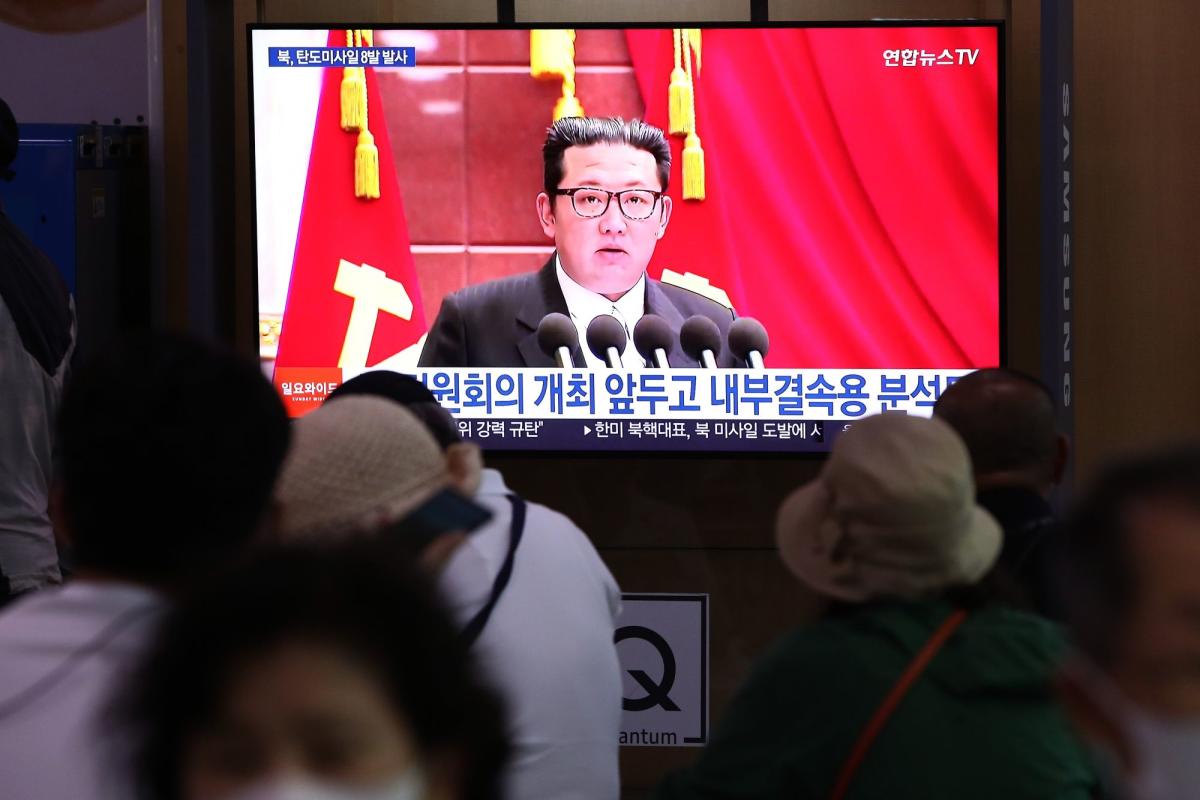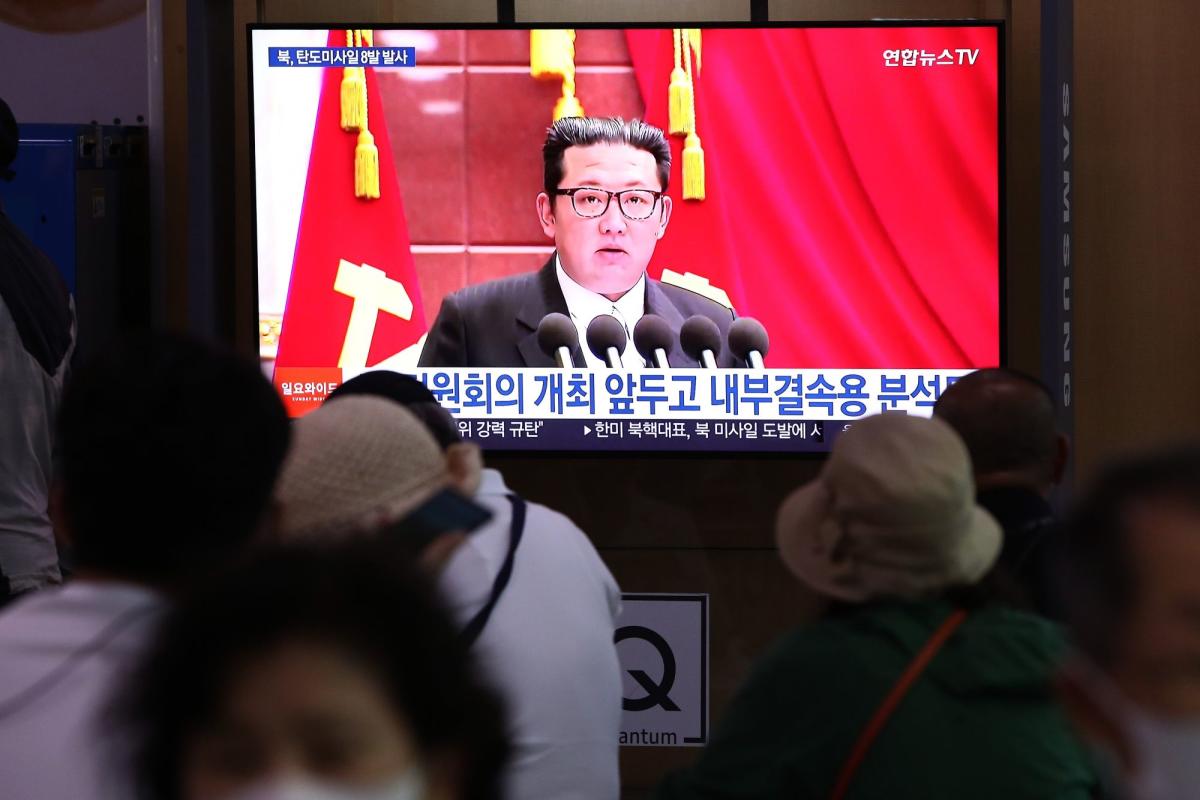
(Bloomberg) — North Korea fired a short-range ballistic missile, marking a return to provocations with US Vice President Kamala Harris due to arrive in the region and as an American aircraft carrier group prepares for naval exercises with South Korea.
Most Read from Bloomberg
The launch on Sunday was its first since shooting off its single-day record of eight at the start of June. At least one short-range ballistic missile was fired from Taechon, about 100 kilometers (60 miles) north of Pyongyang, toward waters off its east coast, South Korea’s military said.
The missile reached an altitude of about 60 kilometers and flew about 600 kilometers, its Joint Chiefs of Staff said. Japanese Defense Minister Defense Minister Yasukazu Hamada said it splashed down outside of the country’s exclusive economic zone.
The flight path would be consistent with a North Korean short-range ballistic missile. The launch comes as the USS Ronald Reagan aircraft carrier group arrived in South Korea to stage its first combined naval exercises in about five years later this week. Harris will be in Tokyo this week to attend a funeral for former Japanese Prime Minister Shinzo Abe.
Kim Jong Un “had his crosshairs” on the USS Reagan in South Korea and Harris’ upcoming visit, and “probably viewed these events as an opportunity to remind his neighbors of his existence and importantly, the ongoing weapons development,” said Soo Kim, a policy analyst with the Rand Corp. who previously worked at the Central Intelligence Agency.
North Korea has a habit of timing its provocations to political events. The latest launch also takes place about a month after the US and South Korea held the Ulchi Freedom Shield — their biggest joint military exercise in about five years.
South Korea’s Joint Chiefs of Staff said in a text message to reporters that the country “is maintaining its readiness posture.” North Korea has for decades denounced joint drills as a prelude to an invasion and it typically doesn’t comment on its launches until at least a day after the fact — if at all.
The US Indo-Pacific Command said it was aware of the ballistic missile launch. “While we have assessed that this event does not pose an immediate threat to U.S. personnel or territory, or to our allies, the missile launch highlights the destabilizing impact of the DPRK’s unlawful WMD and ballistic missile programs,” it said in a statement, referring to North Korea by its formal name.
So far in 2022, the North Korean leader has fired off more ballistic missiles than in any other year of his decade in power. He has tested rockets designed to evade US-operated interceptors, increasing the threat of a credible nuclear strike against the US and its allies in Asia.
The US, Japan and South Korea have said North Korea may be looking to soon conduct its first nuclear test since 2017 as it seeks to miniaturize warheads for potential tactical strikes and build more powerful weapons for its missiles that could carry a warhead to the US mainland.
North Korea may also be preparing to fire off its first submarine-launched ballistic missile in more than a year. Yonhap News Agency reported, saying South Korea’s military has spotted activities presumed to be preparations for a launch.
“Though he has yet to deal the nuclear card, Kim is also aware that he needs to pick his cards wisely to yield a desired outcome,” Soo Kim of Rand said. “It seems for the time being that the short-range missile test may suffice, as it helps North Korea stay relevant and reminds us that the nuclear issue still needs to be addressed.”
Any display of the weapons in Kim’s nuclear arsenal would serve as a reminder of the pressing security problems posed by Pyongyang that have simmered as US President Joe Biden’s administration focused on Russia’s invasion of Ukraine.
Large-scale drills had been put on hold to facilitate nuclear disarmament talks between Kim and former US President Donald Trump, which produced no tangible results in winding down North Korea’s atomic arsenal.
In a show of defiance, North Korea fired two cruise missiles on Aug. 17 in a launch that coincided with a news conference by South Korean President Yoon Suk Yeol to mark 100 days in office. Although there are no United Nations Security Council resolutions banning launches of such rockets, it was one of the most provocative actions from the state since its move in June to fire eight ballistic missiles in one day.
(Updates with comments from US military and analyst)
Most Read from Bloomberg Businessweek
©2022 Bloomberg L.P.




